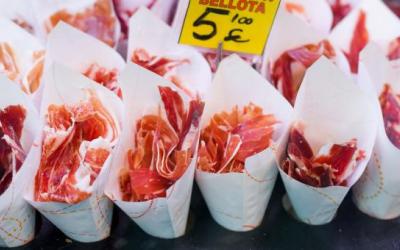EU beef production will continue to fall in 2022

Despite attractive prices for producers, beef will remain scarce and expensive next year. Germany will be particularly affected.
Beef cattle prices in the European Union are currently higher than they have been for many years. The reason is the shortage of supply compared to the buoyant demand, which is also spreading to the world market. In its current autumn forecast, the European Commission suggests that deficit trends will continue in 2022 as Community beef production is expected to fall more than this year.
From January to July 2021, beef production in EU member states decreased by 1.2% compared to the same period last year to 3.95 million tons. However, due to high feed costs and producer prices, Brussels analysts expect an increase in slaughter in the second half of the year, so a decline for the full year is expected to be 60,000 tons to 6.81 million tons. This is likely to be helped by the fact that in June the number of cattle in 13 major producing countries decreased by 0, 6% y / y to 70.35 million heads.
According to the national experts of the European Commission forecasting group, different production trends are expected in individual member countries in 2022. For example, net beef production in Germany is projected to decline by 5% to 1.04 Mt, and in France, the largest producer in the EU, by 2.2% to just under 1.40 Mt. Austria, the Netherlands and Spain will also produce less beef. In Ireland, however, production is projected to rise by 6.2% to 615,000 tonnes in 2022. Production is also expected to increase in Denmark, Bulgaria, the Czech Republic, Slovenia and Sweden.
In its forecast, the EU Commission also expects EU beef consumption to decline in 2022 by around 36,000 t, or 0.5 y/y, to 6.55 Mt. However, this decline is expected to be less than in the manufacturing area. To offset this, EU analysts believe member countries' beef imports should increase by about 10% to 354,000 tons. However, at present, beef on the world market is scarce and expensive. it is not known if this will change in 2022. Here, too, much will depend on the world's largest importer, CHINA , whose beef imports have been steadily rising in recent years.
Read together with it:
- Низкое предложение и устойчивый спрос: в Аргентине растут цены на мясоЦены на говядину снова выросли, что отразилось на полках супермаркетов и в мясных магазинах. За последние две недели розничные цены выросли на 8–12%, а на некоторые популярные отрубы рост превысил 15% по сравнению с октябрем. Тем не менее, продажи остаются высокими: потребители продолжают покупать, принимая новые цены и закрепляя тенденцию, которая повторяется каждый год в конце года, когда спрос ...
- Rosselkhoznadzor has banned meat imports from two Belarusian enterprises due to violations.In addition, three other Belarusian producers are now subject to strict laboratory monitoring due to initial deviations: azithromycin was found in poultry MEAT from Druzhba Poultry Farm, and the pesticide imidacloprid was found in honey from Pchalyar Polachchyny Farm. Powdered MILK from Luninetsky Dairy Plant was also found to containcoli bacteria . These measures were taken at the request of the ...
- Лучшие не только по молоку. Какие рекорды поставили в экспериментальной базе имени КотовскогоНовости темы Экспериментальная база имени Котовского известна далеко за пределами Узденщины благодаря высоким показателям, которых из года в год добиваются в хозяйстве. Лучшие результаты в районе агропредприятие показывает как по молоку и зерновым, так и по сахарной свекле. Страда этого года, проходившая не в самых простых погодных условиях, также стала рекордной. Хлеб – всему голова Весна 2.........
- Британия запретит морские перевозки российского СПГЗапрет на предоставление услуг по перевозке и страхованию российского СПГ будет вводиться поэтапно и по согласованию с ЕС, который ранее ввел санкции против российского газа. Москва называет ограничительные меры Запада незаконными Великобритания планирует запретит компаниям предоставлять услуги по перевозке и страхованию российского сжиженного природного газа (СПГ), передает REUTERS со ссылкой на ...
- Agricultural organizations in Kabardino-Balkaria increased meat production by almost 20%.Over the first nine months of this year, agricultural organizations in Kabardino-Balkaria increased livestock and poultry production (for slaughter, live weight) by almost 20 percent compared to the same period in 2024. In physical terms, production in this category of agricultural producers amounted to 37,6......




























































